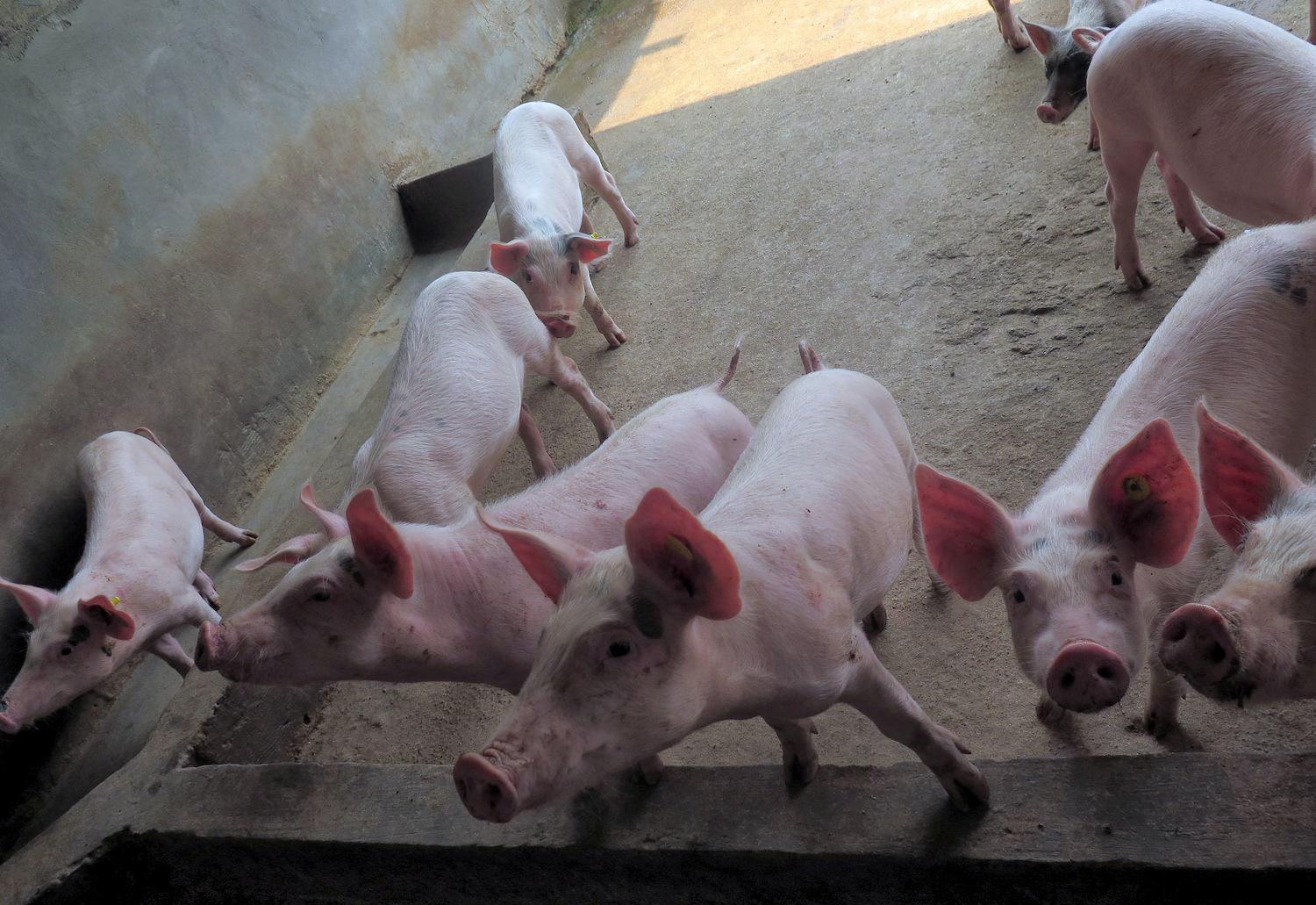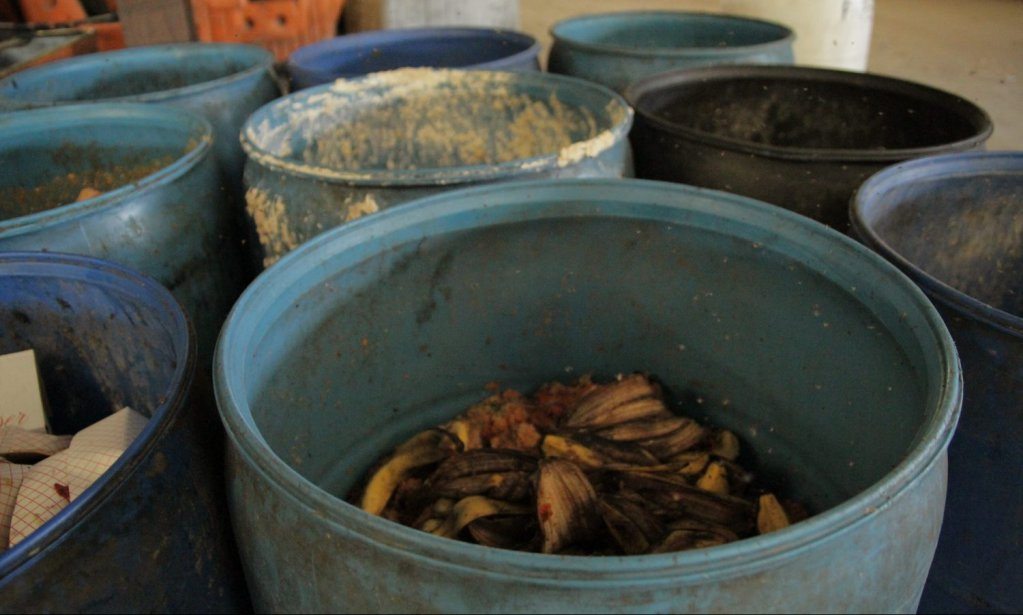The commercially-produced pigs we eat sit at the bottom of what’s known as a genetic pyramid. At the top sits a small nucleus herd—a group of purebred super-pigs that are genetically immaculate (or at least pretty close), the great-grandparents of the pigs that wind up on our plates. A second group in the middle of the pyramid includes what are called the multipliers. They’re there to multiply whatever genetic improvements have been seeded in the nucleus group. The third group—the multipliers’ sons and daughters—are the commercial pigs. Their babies are the ones that turn into pork roast.
Knowing this, it seems like it’d be pretty simple to genetically alter a large percentage of our porcine population: introduce a couple quick edits to the nuclear group, let them do their thing, and a few years down the line all commercial pigs are born with extra tails or fatty haunches or whatever eaters want.
In the past few years, researchers at the University of Missouri have made big strides in developing genetic modifications that they believe might save lots of pigs—and lots of money—if they’re introduced to that nucleus herd, then edited all the way down to the supermarket shelf.
The concept is simple: They want to breed pigs that are genetically resistant to common diseases. When those pigs are ready for market, their innate viral immunity will save thousands of lives—and tons of time and effort for farmers.
Dr. Randall Prather, a Curators’ Professor in animal science at Missouri, says it’s difficult to quantify the damage TGEV inflicts on swine herds each year. He found one paper, dated from 1970, that estimates the disease costs farmers 18 cents per head, which would equal around $21 million a year in the United States and thousands of lives saved. “I don’t know if it’s fair to make that extrapolation, but that’s the best I can do,” he adds. PRRS, the disease his team successfully bred against in 2015, costs the industry an estimated $6 million each day.
The researchers began by focusing on two different viruses that they thought might use the same molecule to infect pigs. One of those viruses was TGEV, which affects the intestines of young pigs and typically kills them. The other is Porcine Epidemic Virus (PEV). Previous studies suggested that an enzyme called ANPEP acted as a receptor for the virus.
Prather’s team hypothesized that suppressing a pig’s ability to produce ANPEP in the first place would essentially eliminate the keyhole these viruses use to enter their bodies and cause infections. Eliminating the ANPEP-producing enzyme meant editing one gene. “We used the CRISPR/Cas9 to knock that out and then sent the pigs over to Kansas State to be challenged,” Prather says. (Challenging, in this case, is a euphemism for inoculating the pig with a virus and hoping for the best.) CRISPR/Cas9 is a technology that allows scientists to precisely edit genes, and it’s been celebrated because it makes the genetic modification process much cheaper and faster. More on that here.
Of course, there’s a long road between figuring out how to breed disease-resistant pigs and putting pork from gene-edited livestock on the menu. As Sam Bloch wrote in May, the company that licensed the patent for the PRRS-resistant pigs estimates it’ll cost $100 million to shepherd them through the Food and Drug Administration’s (FDA) approval process. The pork industry has lobbied to move regulating gene-edited livestock from FDA to USDA (a scenario similar to the kerfuffle over which agency should regulate cell-cultured meat).
“The Food and Drug Administration looks at a gene or an intentional change in the letters of a genome as a new drug,” Prather says. “So if I change one letter out of the 3 billion bases, the 3 billion letters in the swine genome, they say that’s a new drug and that’s why it’s costing $50 to $60 million to get it approved.” He points out that a normal fertilization produces closer to 200 random errors.
Even if the researchers succeed in winning FDA approval, convincing the public to buy gene-edited meat may be another story entirely.
Recent research has undermined the notion that CRISPR gene-editing technology is as accurate as advertised. I asked Prather whether or not he was concerned about unintended consequences—an imprecise CRISPR operation suppressing extra genes alongside the ANPEP-producing enzyme.
Prather adds that he expects unintended mutations to disappear as the new genes make their way down the pyramid toward the plate. “It’s a real concern if you’re treating a human, you don’t want to turn on an oncogene and get a cancer. Well, if we do that in a pig, the pig’s probably not going to get born.”
Barring massive unforeseen changes in policy (or, say, a Contagion-esque wipeout of pork populations with a disease like African swine fever, for which the only cure is genetic modification), it’ll be a while before we’re barbecuing genetically modified pigs.
That swine fever hypothetical, by the way, isn’t total fiction. On Wednesday, The Guardian reported that the incurable disease has spread to 12 Chinese provinces, an area home to more than half the country’s pig population. Meanwhile, a group of researchers in the U.K. is using gene editing technology to test a potential cure: they’re swapping out an amino-acid producing gene with a similar gene borrowed from a warthog. Warthogs can get African swine fever, but it doesn’t kill them. In March, The Guardian reported those researchers are “on the brink” of success.











